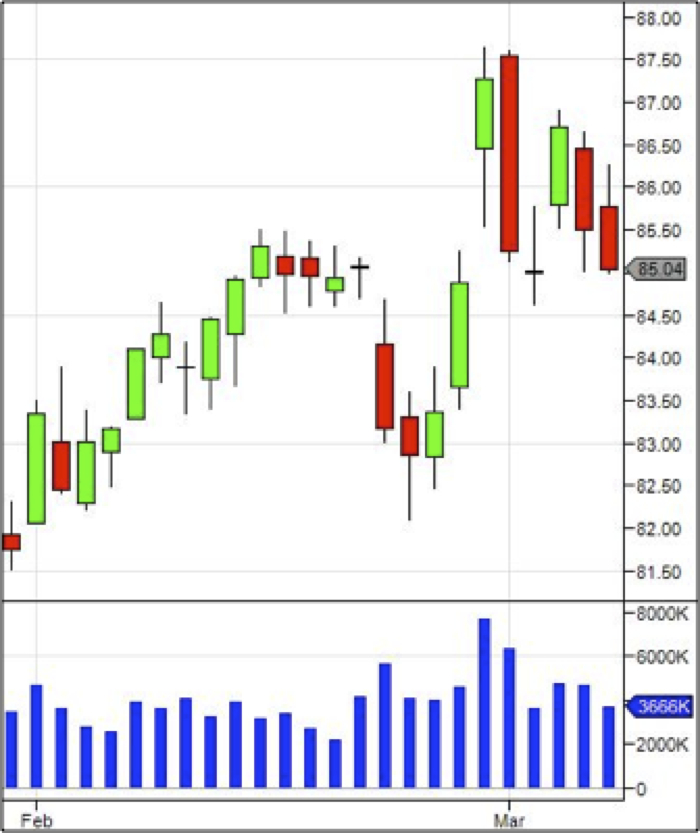
Berkshire Hathaway (BRK.B) daily stock chart, February 2011, showing an unusual price jump on the day that actress Anne Hathaway hosted the Academy Awards ceremony. Such recent events demonstrate shortcomings in the contextual discrimination of natural language processing.
IBM’s Watson computer, which beat champions of the quiz show “Jeopardy!” two years ago, is now being employed to advise Wall Street on risks, portfolios and clients. Citigroup Inc., the third-largest U.S. lender, was Watson’s first financial services client. The unique Watson algorithms can read and understand 200 million pages in three seconds. Such skills are well suited for the finance industry. Watson can make money for IBM by helping financial firms identify risks and rewards. Watson can go through newspaper articles, documents, SEC filings, and even social networking sites, to try to make some sense out of them.
This approach is not entirely new. Many high frequency traders have trained algorithms to capture buzzing trends in the social media feeds without, however, fully learning the dynamics of accurate context of the information being diffused. For example, on February 28, 2011, during the excitement of the Academy Awards when actress Anne Hathaway hosted the major television event and was the source of much media excitement, stock prices of Berkshire Hathaway rose by 2.94%. The following chart, of BRK.B stock, is one of many instances that show how the career of the actress has shaped the stock price of the conglomerate. It is interesting to notice that traders realized the error and the huge stock price jump reversed itself the very next day, March 1, 2011.
Fortunately, things are changing rapidly. A Google search on the phrase “natural language processing” yields over 3.1 million results. This is a very hot area for forecasting, as natural language processing news stories, tweets, and message board posts have now been the focus of dozens of research studies.
Although the original Watson computer contained $3 million worth of hardware alone, IBM is now releasing a new server that can be purchased for about $67,000 complete. It includes a scaled down version of the brain IBM engineered to build Watson.
Reuters publishes 9000 pages of financial news every day. Wall Street analysts produce five research documents every minute. Financial services professionals receive hundreds of e-mails a day. And these firms have access to data about millions of transactions. The ability to consume vast amounts of information to identify patterns and make informed hypotheses naturally make Watson-style computing an excellent solution to help make informed decisions about investment choices, trading patterns and risk management.
The excerpt above is from my article “The Future of Financial Market Forecasting” in the Fall 2013 issue of FORESIGHT: THE INTERNATIONAL JOURNAL OF APPLIED FORECASTING. Here is the link to the entire article: Future of Financial Forecasting
